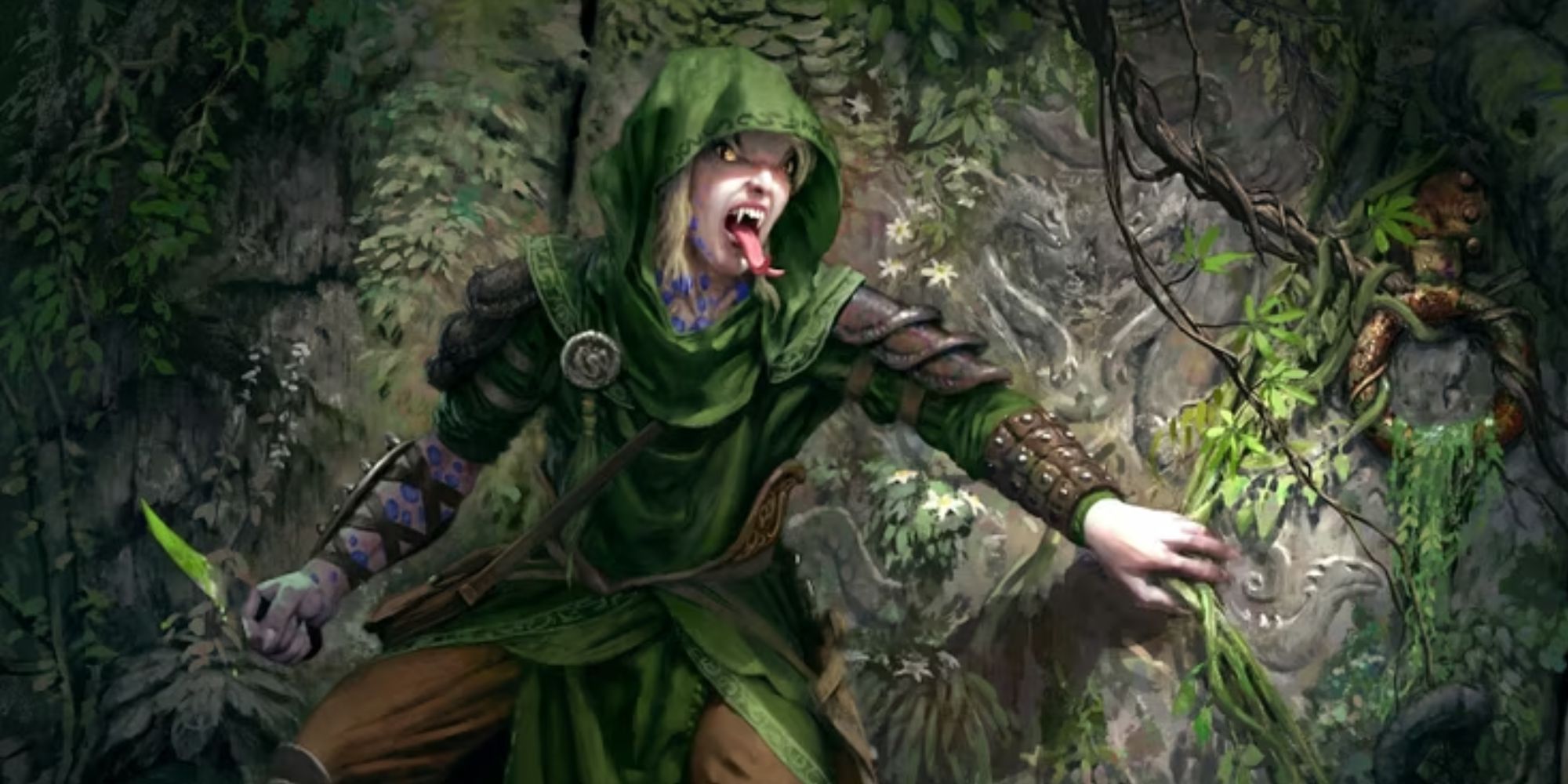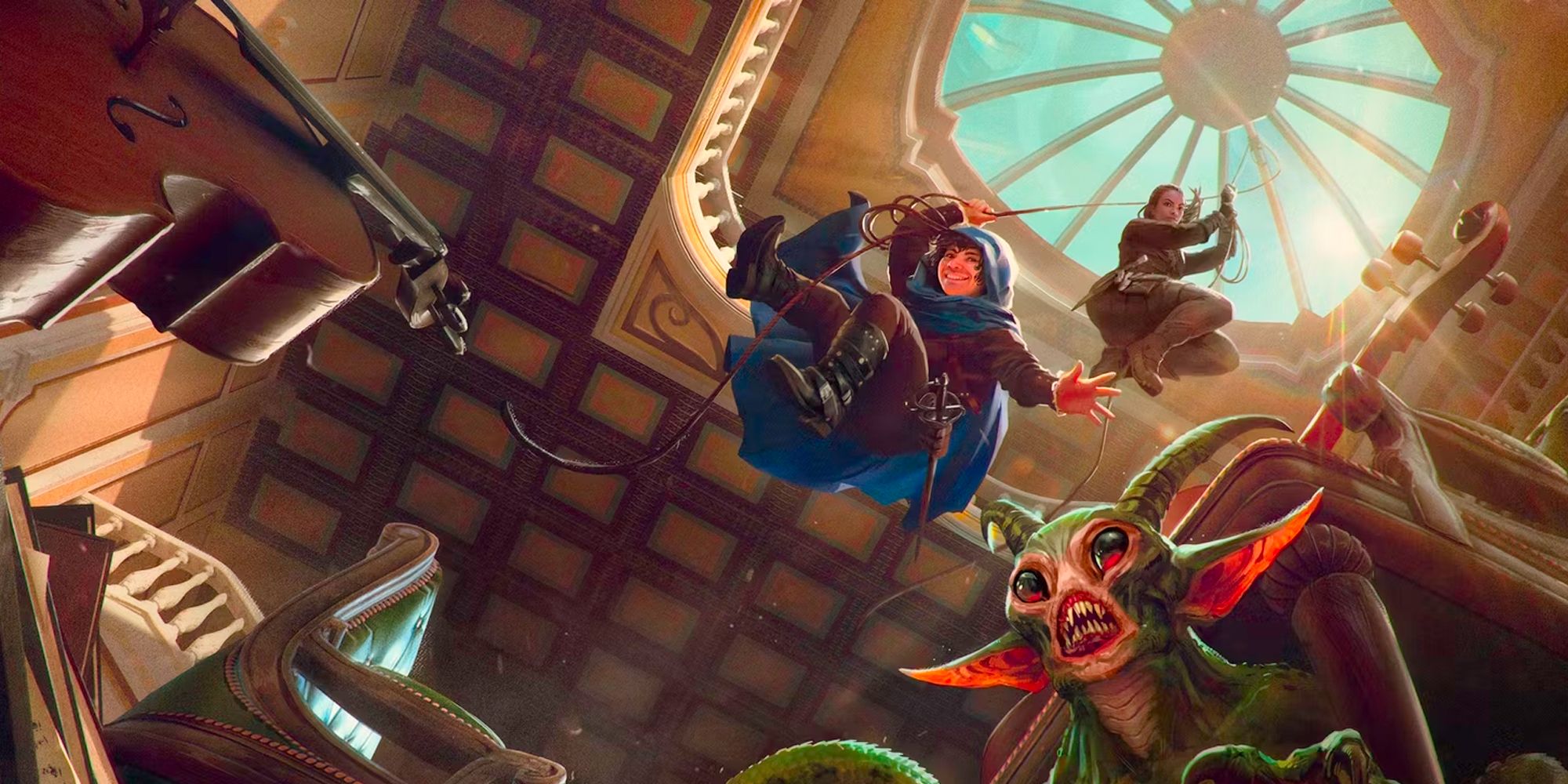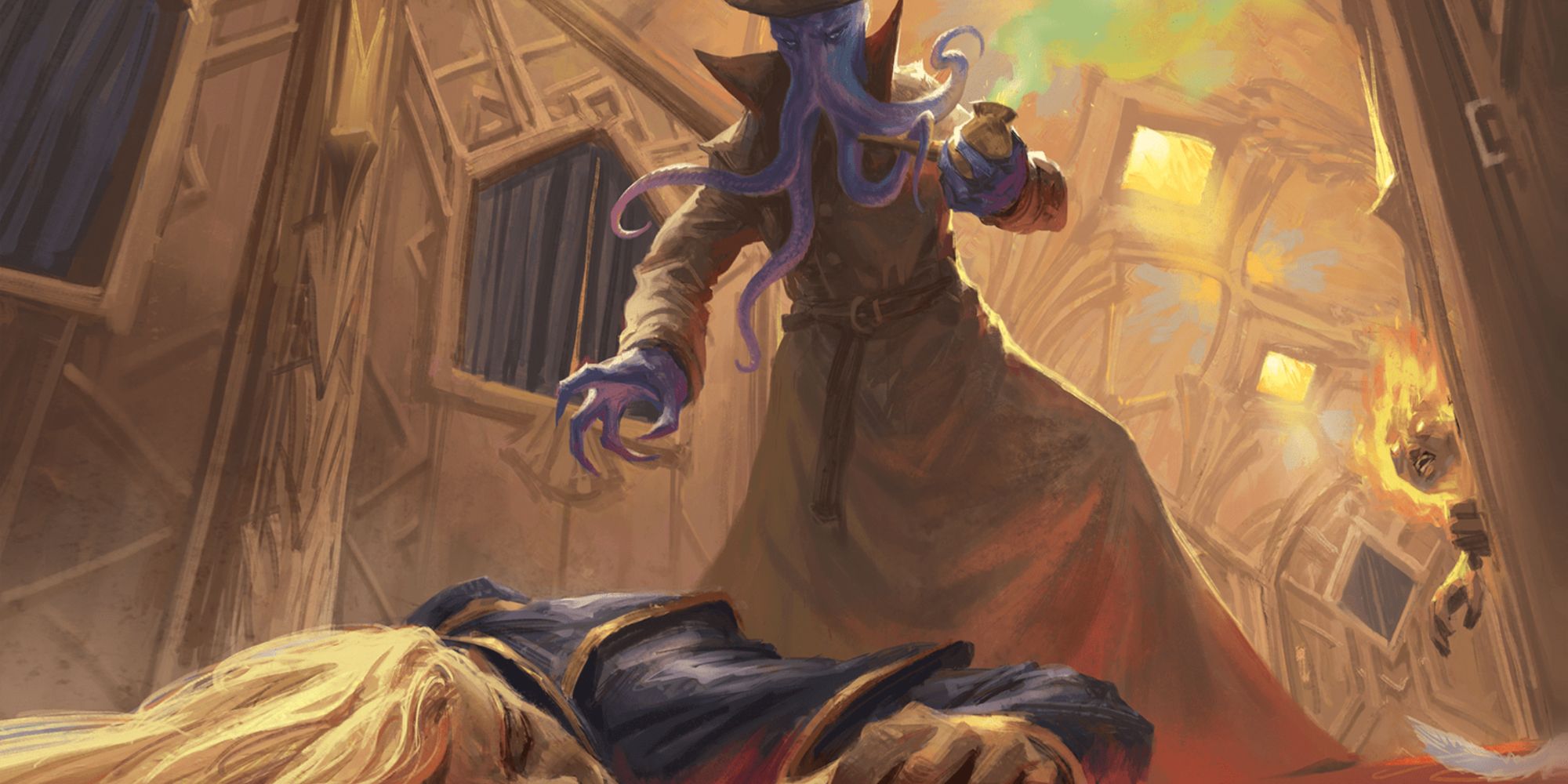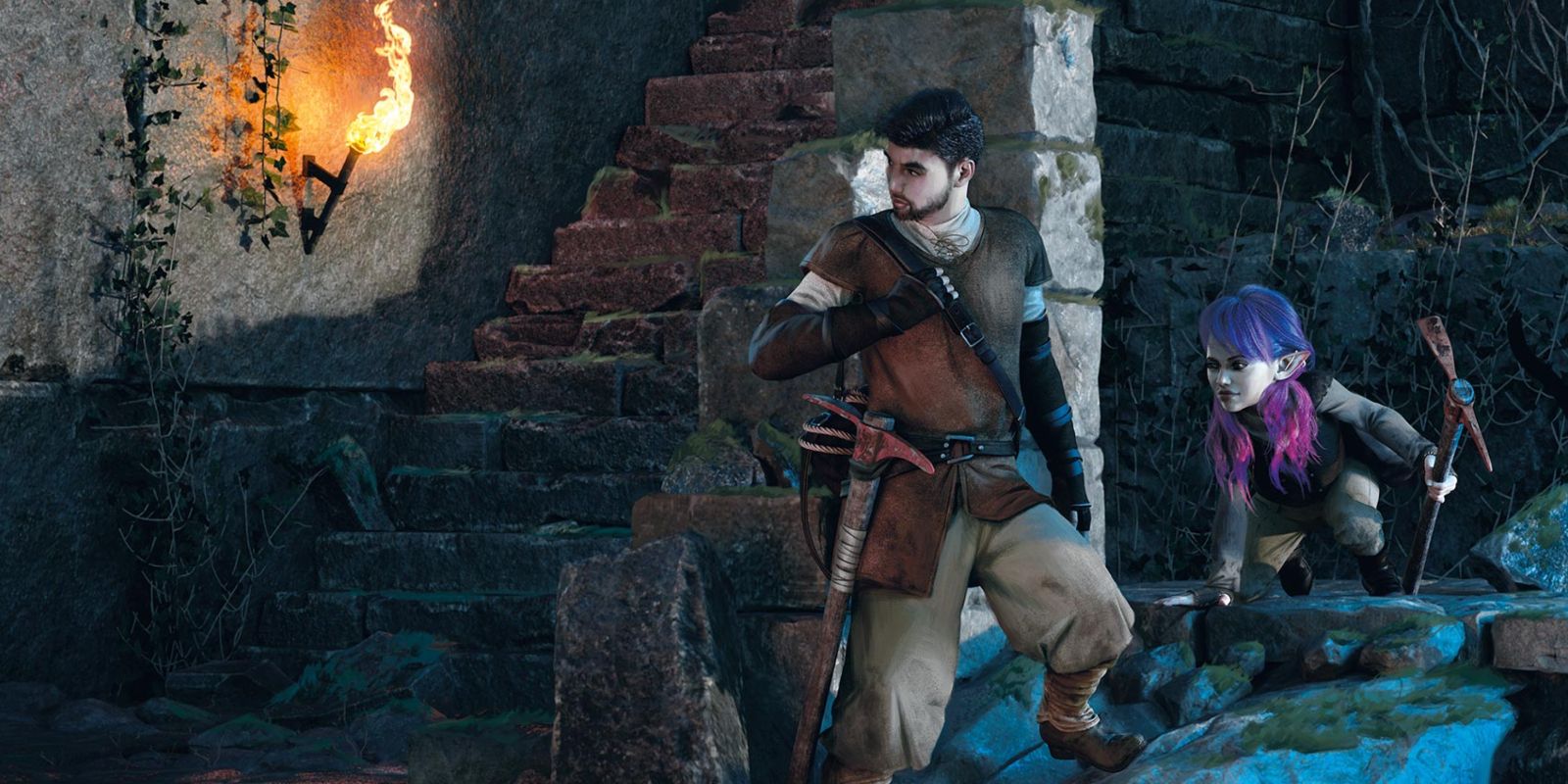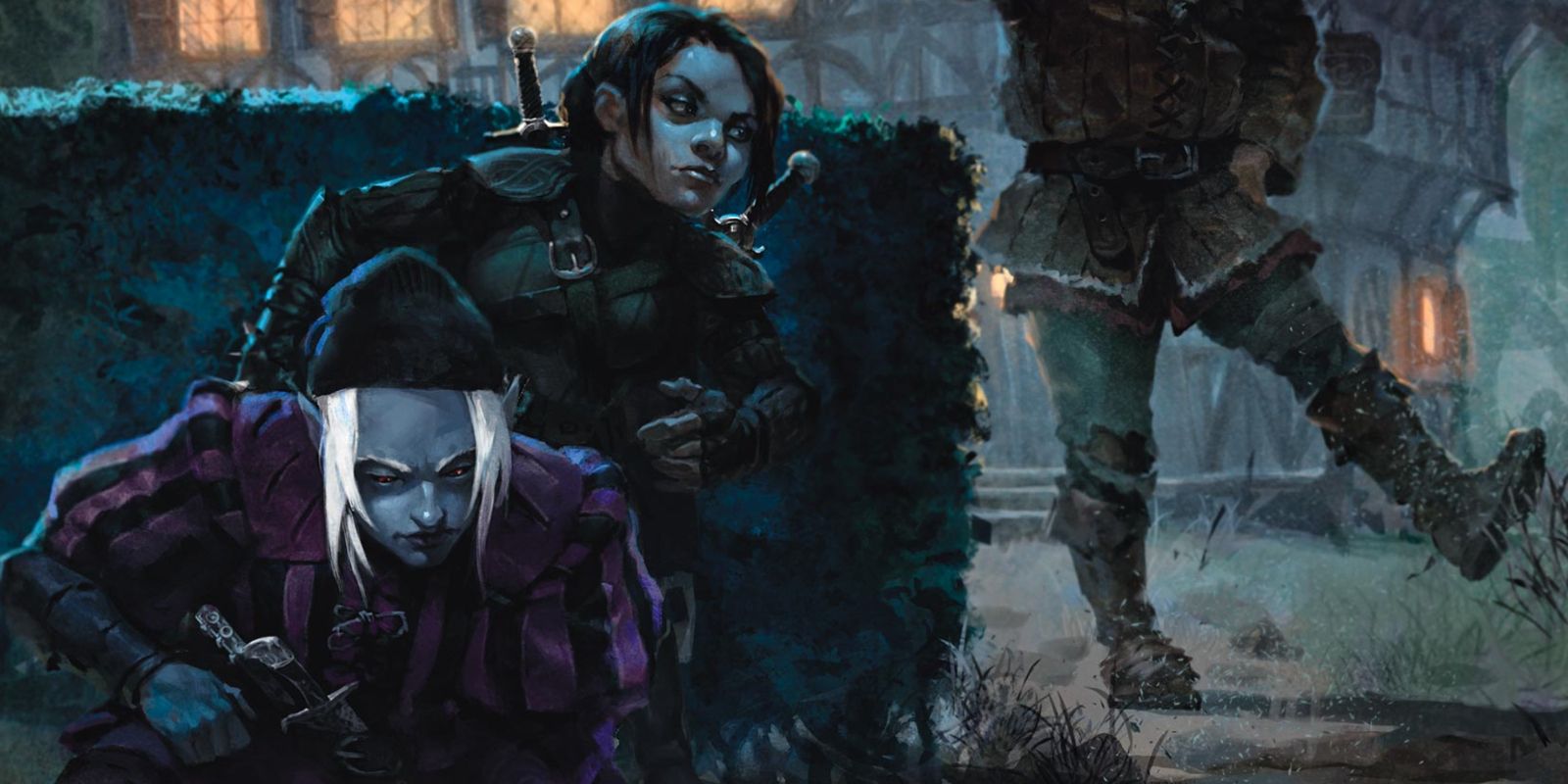Sneaking through the shadows, patiently waiting for the right moment to strike, and killing your target before they even knew you were there—that is the mindset of the assassin subtype for the rogue class. Rogues in Dungeons & Dragons, while notorious for being “edgy blade wielders,” are also one of the most damaging classes in Dungeons & Dragons.
Dungeons & Dragons: How To Implement Spying And Espionage
Looking to add some mystery and subterfuge to your DnD campaign?
Like every class, the rogue has multiple subclasses, with the “assassin” archetype focused on precision and dealing incredible amounts of damage in a single turn. But just because you have the ability to assassinate your targets doesn’t mean you may know how to do so.
Rogue Assassin Features And Traits
By picking the assassin subclass as a rogue in Dungeons & Dragons, you will start to unlock various abilities that will better help you succeed in closing the distance between you and your target before delivering the final blow.
Of course, you will still benefit from the standard features of the rogue class, such as the infamous sneak attack.
You can learn more details about the rogue class and the assassin subclass from the Player’s Handbook.
|
Level Unlocked |
Feature Name |
Feature Description |
|---|---|---|
|
3rd |
Bonus Proficiencies |
Become proficient with the Disguise Kit and Poisoner’s Kit. |
|
3rd |
Assassinate |
Advantage on Attack Rolls against targets who haven’t engaged in combat yet. Any hit landed on a surprised creature is automatically a Critical Hit. |
|
9th |
Infiltration Expertise |
Spend seven days and 25 gp to learn about a target and create a new identity to adopt. |
|
13th |
Imposter |
You can mimic a target’s speech and mannerisms. If someone suspects that you are not who you say you are, you have an Advantage on Deception checks to avoid detection. |
|
17th |
Death Strike |
When you hit a surprised target, they must succeed on a Constitution saving throw (DC = 8 + DEX mod. + Prof. bonus) or take double the damage you deal. |
The “death strike” feature
stacks with critical hits
, so you are effectively dealing quadruple the damage you would normally hit.
Playing As The Rogue Assassin
While this may vary on your personality, assassins often remain calm and collected when interacting with others. Even for chaotic evil killers, assassins are masters of waiting for the moment to attack.
The rogue class is often considered a “glass cannon,” meaning that despite dealing incredible damage, they often lack much defense
to protect them.
Whether you are working under the royal guard or roleplaying as a bloodthirsty killer,
wait and plan accordingly
before entering combat.
While you may specialize in death, being part of the rogue class category means you also have the skills to pick locks, spy on others, and sneak into spaces that others can’t.
Other players or NPCs may inquire you for your services in intelligence gathering, and you can then use your assassin features to
get past anything that stands in your way.
Assassin Rogue Class Setup
When creating an assassin rogue, you will first need to reach level three in the rogue class progression to unlock the assassin subclass. Afterward, you can unlock the specific features mentioned for the assassin subclass.
Weapons
As for your weapons, features, and proficiency, there are still a dozen different ways you can customize yourself. However, it is best to choose gear and features that make you stealthy yet dangerous.
|
Weapon |
Description |
|---|---|
|
Dagger |
1d4 Piercing Damage, Finesse, Light, Thrown |
|
Rapier |
1d8 Piecing Damage, Finesse |
|
Shortbow |
1d6 Piercing Damage, Two-Handed |
Using finesse weapons allows you to choose between using either your Strength or Dexterity modifier to determine your damage. Since rogues focus on maximizing their Dexterity stat, this puts them at an advantage.
Some melee weapons, like daggers, can also be
thrown in a pinch
as long as they have the mentioned property.
As for ranged weapons, rogues should avoid weapons that have a reload time so they can make their attacks as efficient and often as possible.
Also remember that ranged weapons can still be used to
trigger the sneak attack feature from a distance
.
Feats
As for features, choose ones that allow you to bypass any obstacles to your target, as well as others that provide an advantage in combat.
|
Feat |
Description |
|---|---|
|
Mobile |
Increases your movement speed, allows you to move more efficiently through difficult terrain, and helps negate opportunity attacks against you. |
|
Dungeon Delver |
Lets you detect traps and doors that may thwart you and your party, gives you advantage and resistance against traps, and allows you to travel at a fast pace without reducing your passive perception. |
|
Charger |
While you are silently waiting in the distance for the time to strike, you can use the charger feat to double your speed (reaching your target at incredible speed) and still be able to make a Melee attack against them if you are in range (most likely with the surprise trait at DM’s discretion). |
Species & Backgrounds
Ultimately, the species and background you choose is entirely up to you, as each one has incredible benefits that you can draw from. The only thing that most players who want to build an assassin rogue will look for is being able to have darkvision, which either comes from a specific trait or through the use of magic items.
As for your background, the criminal and spy background is often a common choice, as you will be able to always have a point of contact to talk to for aid or information regarding your next target.
Hunting Your Targets And Fighting In Combat As A Rogue Assassin
Before entering combat, a rogue should try to surprise their target as often as possible. Not only will this let you apply the assassinate feature, but you will also be able to use the sneak attack feature to apply additional damage.
Striking First
Think about your positioning in correlation to your target. If it’s a dragon, can you sneak from a corner of their lair? If it is a cultist, will they travel on a path you can hide on? Can your party distract the target while you jump from behind?
Once you make your initial attack (depending on whether they are surprised or if you have an advantage), you can apply sneak attack, the assassinate, and even the death strike feature (at level seventeen) in a single turn for an incredible amount of damage.
This also does not include your standalone weapon damage and any poison you have applied to your weapon beforehand.
Utilizing Poisons
Speaking of poisons, there are dozens that are often overlooked in the world of Dungeons & Dragons. While some can cost an extraordinary amount or be hard to find, getting your hands on a specific dose can allow you to turn the tide of combat in a single action.
Some of the most devastating poisons include:
|
Poison Name |
Type |
Effect |
|---|---|---|
|
Carrion Crawler Mucus |
Contact |
Target must succeed on a DC13 Constitution saving throw or be Paralyzed for 1 minute. |
|
Oil of Taggit |
Contact |
Target must succeed on a DC13 Constitution saving throw or be Unconscious for 24 hours. |
|
Midnight Tears |
Ingested |
Target must succeed on a DC17 Constitution saving throw or take 9d6 Poison Damage (half if they succeeded) at midnight the following evening. |
|
Purple Worm Poison |
Injury |
Target must succeed on a DC19 Constitution saving throw or take 12d6 Poison damage (half if they succeeded). |
|
Truth Serum |
Ingested |
Target must succeed on a DC11 Constitution saving throw or be under the effects of the “Zone of Truth” spell for 1 hour. |
You may need to work with your Dungeon Master to go on side quests to find specific poisons or save money to purchase them from a marketplace.
Engaging In Combat
Unfortunately, once you are known to your target, your offensive capabilities become less effective. Depending on if you have a party to fight alongside you, your options can be limited.
Fighting head-on is still an effective strategy. As long as other allies are next to your target, you can continue to apply Sneak attack to keep dealing high damage.
If you find yourself alone, you can use your cunning action to disengage or hide quickly so you can make another sneak attack later on, but this can still be risky. You will need to make sure you can find a place to hide, as well as ensure that your target isn’t able to spot you.
Otherwise, retreating is still a valid option if you don’t think you can finish your target. While your target may keep a more watchful eye the next time you hunt them down, you can take the time to recover, adapt, and try again to go on the offensive later.
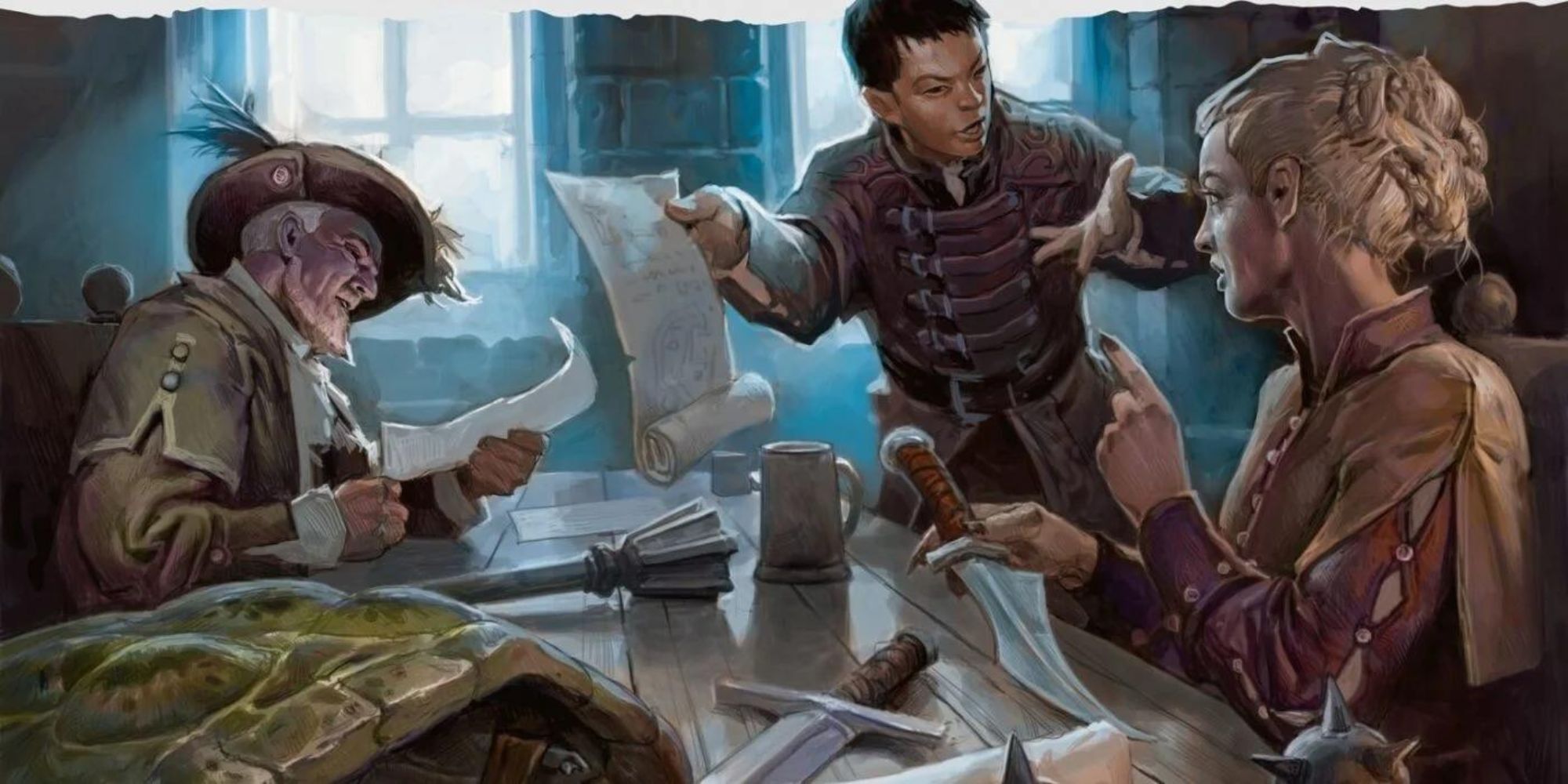
Dungeons & Dragons: How To Take Better Notes As A Player
Forget forgotten lore and foggy quests! Up your D&D game with effective note-taking strategies.


